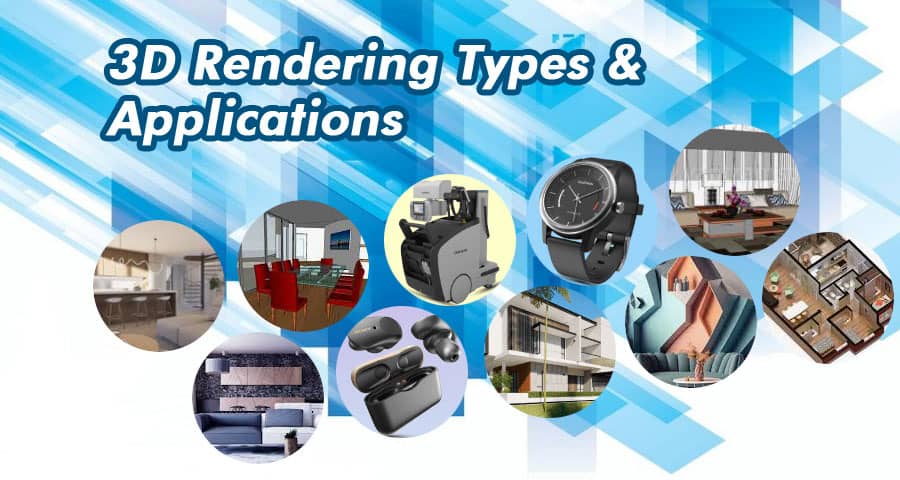In today’s digital age, 3D rendering has emerged as a cornerstone technology revolutionizing various industries, from architecture and interior design to gaming and animation. With its ability to create realistic visualizations and immersive experiences, 3D rendering has become an indispensable tool for professionals across diverse domains.
Understanding the Types of 3D Rendering
- Scanline Rendering: Scanline rendering, also known as rasterization, is one of the earliest and most widely used rendering techniques. It involves dividing each polygon of a 3D model into individual scanlines and then rendering each scanline independently. This process is highly efficient for rendering complex scenes in real-time, making it a preferred choice for video games and interactive applications.
- Ray Tracing: Ray tracing is a sophisticated rendering technique that simulates the behavior of light rays in a virtual environment. By tracing the path of each ray as it interacts with objects in the scene, ray tracing produces highly realistic images with accurate reflections, refractions, and shadows. While computationally intensive, ray tracing delivers unparalleled visual fidelity, making it ideal for architectural visualization, product design, and high-end cinematic rendering.
- Path Tracing: Path tracing builds upon the principles of ray tracing, introducing additional algorithms to simulate the stochastic behavior of light. By tracing the paths of multiple light rays through the scene and accounting for global illumination effects such as indirect lighting and caustics, path tracing produces photorealistic images with unparalleled realism. While slower than traditional ray tracing, path tracing excels in capturing subtle nuances of light and materials, making it indispensable for film production, visual effects, and scientific simulations.
Applications of 3D Rendering Across Industries
- Architecture and Interior Design: In the field of architecture and interior design, 3D rendering has revolutionized the way professionals visualize and communicate design concepts. By creating lifelike renderings of buildings, interiors, and landscapes, architects and designers can present their ideas to clients with unprecedented clarity and realism. 3D rendering also facilitates the exploration of different design options, enabling stakeholders to make informed decisions before construction begins.
- Gaming and Entertainment: In the gaming and entertainment industry, 3D rendering serves as the backbone of immersive virtual worlds and captivating visual effects. From realistic character animations to breathtaking landscapes, 3D rendering technologies power the most popular video games, movies, and animated films. By leveraging advanced rendering techniques such as ray tracing and real-time rendering, developers can create stunning visuals that blur the line between fantasy and reality, captivating audiences worldwide.
- Product Design and Marketing: In product design and marketing, 3D rendering plays a crucial role in visualizing and showcasing products in a compelling manner. By creating high-fidelity renderings and animations, designers and marketers can highlight the features and benefits of products with unparalleled detail and realism. Whether it’s a new smartphone, a luxury car, or a futuristic gadget, 3D rendering enables brands to create visually stunning presentations that resonate with consumers and drive sales.
- Medical and Scientific Visualization: In the fields of medicine and science, 3D rendering is used to visualize complex data and phenomena in ways that are both informative and visually engaging. From anatomical simulations and surgical planning to molecular modeling and simulation, 3D rendering technologies help researchers and practitioners explore intricate structures and processes with unprecedented clarity and precision. By visualizing data in 3D, scientists can gain new insights, communicate findings effectively, and advance knowledge in their respective fields.
Conclusion
In conclusion, the world of 3D rendering is vast and multifaceted, offering a myriad of techniques and applications that continue to push the boundaries of creativity and innovation. From the realistic landscapes of virtual worlds to the intricate details of scientific simulations, 3D rendering technologies have transformed industries and revolutionized the way we perceive and interact with the digital realm. As technology continues to evolve, the possibilities of 3D rendering are limitless, promising even more exciting advancements and breakthroughs in the years to come.


